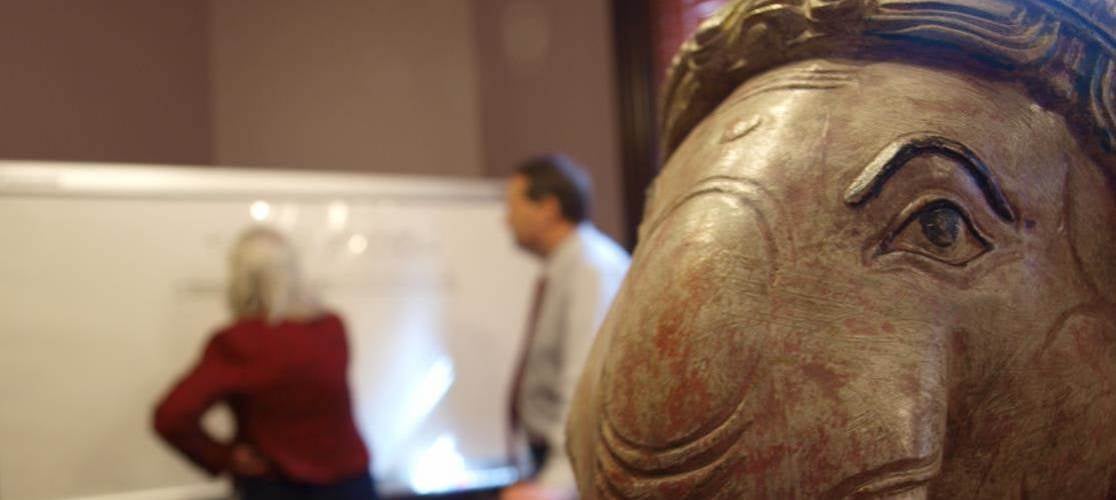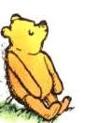
I used to be the guru who got big complicated “stuff” done in big complex organizations. In my early career in the 1980s, I implemented enormous banking software packages for Australian and UK banks.
I have also worked with small enterprises (SMEs), where there is never enough of anything - time, money or resources. No matter what the size of the organization, you still have to overcome the obstacles and get things implemented.
Profoundly frustrated at how the IT-centric projects were undertaken, I switched to strategy execution in 1988 after completing an MBA at Cranfield School of Management.
In 1994, thirty years ago, Jed Simms (my husband, collaborator & best friend) and I set out to show organisations and people how to build capability and competency to execute strategy and deliver valuable transformational change.
Large projects waste billions every year. Not only do over 40% of project investments fail to deliver any improvement, they often make things worse. Only 5% of projects deliver the business value desired. “On-time/on-budget” is still a failure if you gain nothing of value, don’t deliver the strategy & results, become more competitive and reap the $value from the investment.
Rather than providing “consulting advice”, instead we set out to teach organisations how to do it themselves. Together, Jed & I created TOP - knowledge - principles, mental models, step-by-step thinking processes, and practical tools/ techniques that everyone could use.
Tragically, Jed died on 30th July 2016, while he was still working in “full flight” on TOP.
With the support of TOP Evangelists around the globe, I continue the work to spread the adoption of our work..
“If you are facing in the right direction, all you need to do is keep on walking".
Buddha
My mission is to leave a legacy of tools for clear thinking and for solving complex problems. I also want to see TOP-Thinking adopted as a global movement.
I won’t deny, rearranging how the global project industry thinks is very, very hard.
But what has kept me going is seeing the change in people after I have taught them the TOP tools for outcomes thinking and planning - how they genuinely have an epiphany.
Their face lights up, and then they are never the same afterwards.
I laugh and tell them, as they lecture me yet again on “how thinking in outcomes changes your whole mindset”, that “you sound just like a reformed smoker!” One of our international partners, who shall remain nameless, even has a list of "desired outcomes for our family" stuck on his fridge.
That joy - of seeing how much of what we teach with TOP is “so obvious” once seen, just like the water in the goldfish bowl - is what keeps me going.
I have more than 40 years’ experience and an exceptional track record as a high-performing practitioner in the domains of strategy execution and business transformation. I have worked in a broad range of industries including engineering, utilities, banking, financial services and agriculture and held senior roles in Australia, the UK and Europe.
In my early career in 1980, I was incredibly lucky to be one of the four-person team that set up all the IT systems for the first new bank licensed in Australia in 100 years. We started with a handful of bankers and IT people working closely together, and we built the bank from scratch. It was a brilliant time. I didn’t sleep for months, but I learnt almost everything there is to know about retail banking, lending, clearing systems, MICR cheques. Remember them?
In 1984, I repeated this feat as part of the small team that set up all the systems in nine short months for the newly licensed Macquarie Bank to open its doors as a retail bank. Macquarie Bank today is a global behemoth.
I was headhunted to the UK in 1985 to install Hogan for a Scottish bank. That five-month implementation project, I believe still holds the record for the fastest implementation of Hogan anywhere in the world. I then headed to London to automate the offshore banking subsidiaries of NatWest.
Frustrated at the way these major IT-centric way projects were undertaken, and not having a voice at the table because I was viewed as a technologist/propeller head, I decided to study an MBA at Cranfield School of Management. Post-MBA, I jumped to the other side of the fence, from being a projects and IT specialist to strategy execution.
Returning from the UK in 1994, after a short period at EY Consulting, I joined Jed just after he had left BCG and started TOP. We worked together – debating, arguing and thinking.
My expertise was major systems projects in a highly complex and demanding banking environment. Whereas, Jed's expertise was developed in Organisation and Methods (remember those people?) and manufacturing, and then helping organizations make the significant shifts that PC-based word processing enabled. I had never done any significant work in process mapping. What a revelation that was to me. I discovered the blindingly obvious:
I now teach these concepts about "process mindset" to Innovation and Entrepreneurship postgrads as they devise their MVPs, and it is just as much a revelation to them today as it was to me twenty-five years ago.
Sadly, the early ‘90s was just about the time that Michael Hammer’s “don’t automate, obliterate” message was making such a mess of organizations! It gave process work a terrible name from which it does not yet seem to have recovered.
In 2004, I sketched the first version of the Value Equation™ on a whiteboard. It joined up several separate models that we used in TOP but had never connected up into a single framwork.
Then, as per usual, we debated about what we should call it for the next eight years! I finally won the debate when Jed and I attended a weekend seminar in 2012, and I walked around asking people, “if I say Value Equation to you, what comes into your mind?”
In 2012, when reading one of the best economic newsletters in the world, from John Maudlin, I first came across the term “Path Dependency”.
That was my personal epiphany. Or maybe I fell off the horse on the road to Damascus? (Sorry, I promise, no more bad religious jokes.)
In TOP, we thoroughly understood the implications of decisions that could either open up or close down options. We used to teach this concept as part of the Change Execution and Project Governance materials to our clients. But I never knew that there was a defined term for it. That was the start of us developing the Outcomes Path Dependency Roadmaps, which are one of the core TOP concepts we teach people today.
In the early 2000s, I acquired certifications in Myer-Briggs and Neuro-Linguistic Programming and Eriksonian Hypnosis. Around this time, puzzled by the enormous changes in the client staff that we worked with and coached, I set out to understand what seemed to be happening. I describe this as my “down the rabbit hole” period, where for three years, I researched accelerated learning models, brain plasticity and met with leading practitioners in the UK and US.
I discovered that our TOP techniques and methods had “accidentally” been using many accelerated learning techniques, and this accounted for the extraordinary transformation in skills and thinking that client staff we worked with were experiencing.
These Ten Engineered Thinking™ techniques - which emulate consciously what the brain does at a non-conscious level to improve the ability to process complex problems dramatically - were formally embedded into TOP in about 2005. We codified (or made explicit) these Engineered Thinking techniques, so we now teach them as part of the Value Equation training. Eventually, these techniques will end up in their own little course (one day when I find the time and have finished all the other things that I am re-writing).
 My favourite technique #10 is one that has many names: musing, mulling, cogitating, dwelling, contemplating, considering, distilling, ruminating, fermenting, gestating, percolating, composting. It's also known as The Pooh Bear Technique - "sometimes I sits and thinks, and sometimes I just sits".
My favourite technique #10 is one that has many names: musing, mulling, cogitating, dwelling, contemplating, considering, distilling, ruminating, fermenting, gestating, percolating, composting. It's also known as The Pooh Bear Technique - "sometimes I sits and thinks, and sometimes I just sits".
This same period around 2012 also marked my studies into Tacit (or Implicit) knowledge and Codified (or Explicit) knowledge and why these so influence project success. All this research made its way into the TOP techniques.
We explain as we teach TOP that: the way we do the thinking work is just as important as what we do.
We were early to develop an email newletter and gradually buit a worldwide following. In 2004, TOP was a finalist in the AIIA Innovation awards. In 2011, Gartner Inc. recognised TOP® globally as a “Cool Vendor” for its “Innovation and ability to change a market in a significant way”.
The “other hat” I wear is my role as Cranfield Alumni International President for Australia.
I have been supporting the Cranfield Alumni community in Australia and influencing alumni policy for over two decades. Even though we have only around 1300 Alumni in Australia (out of more than 100,000 around the globe) we have been one of the best organized and active communities. Our Australian Alumni community has been at the forefront of the new models being implemented around the globe by Cranfield for alumni relations.
In 2005, I volunteered to lead and coordinate alumni activities to create the highest value scholarship for international study offered in Australia. We established the Scholarship Foundation in 2005, and I was the inaugural president for four years. A team of alumni in all states volunteered their time, skills and knowledge. Over the past fifteen years, the Australian alumni have created the most significant scholarship opportunity in our country for the development of leadership and management talent.
By 2020, we had awarded 13 scholarships, supported 23 people to study at Cranfield and are well on track to make our Scholarship the “pre-eminent opportunity for talented Australians who are passionate about this country and want to contribute to its future.”
In 2017, I was honoured along with luminaries Prof David Mydletton and John McFarlane, (ex-Barclays’ Chairman) as one of the notable “Fifty Faces” for the 50th Anniversary Celebrations of Cranfield School of Management.
It took me about ten years post-graduation to understand how much I had learned and changed during my Cranfield Experience. I will always be incredibly grateful for it.
If you would like to be part of this growing movement, to learn how the thinking process works and then to have fun teaching to to others, please contact me here at TOP.